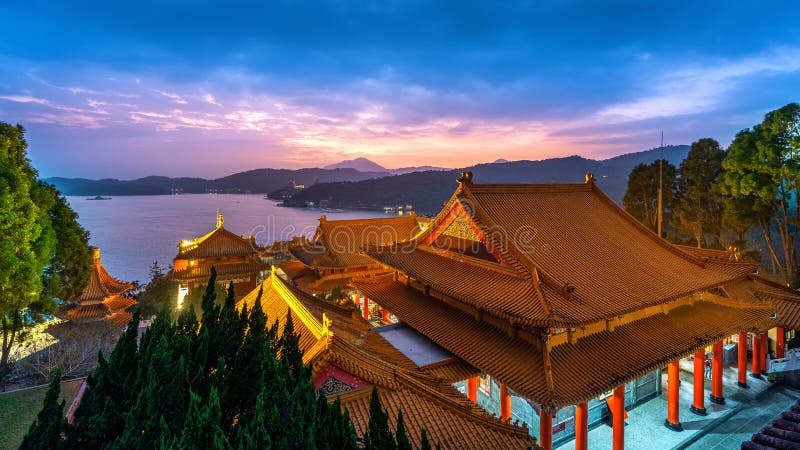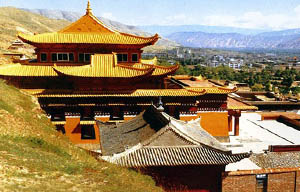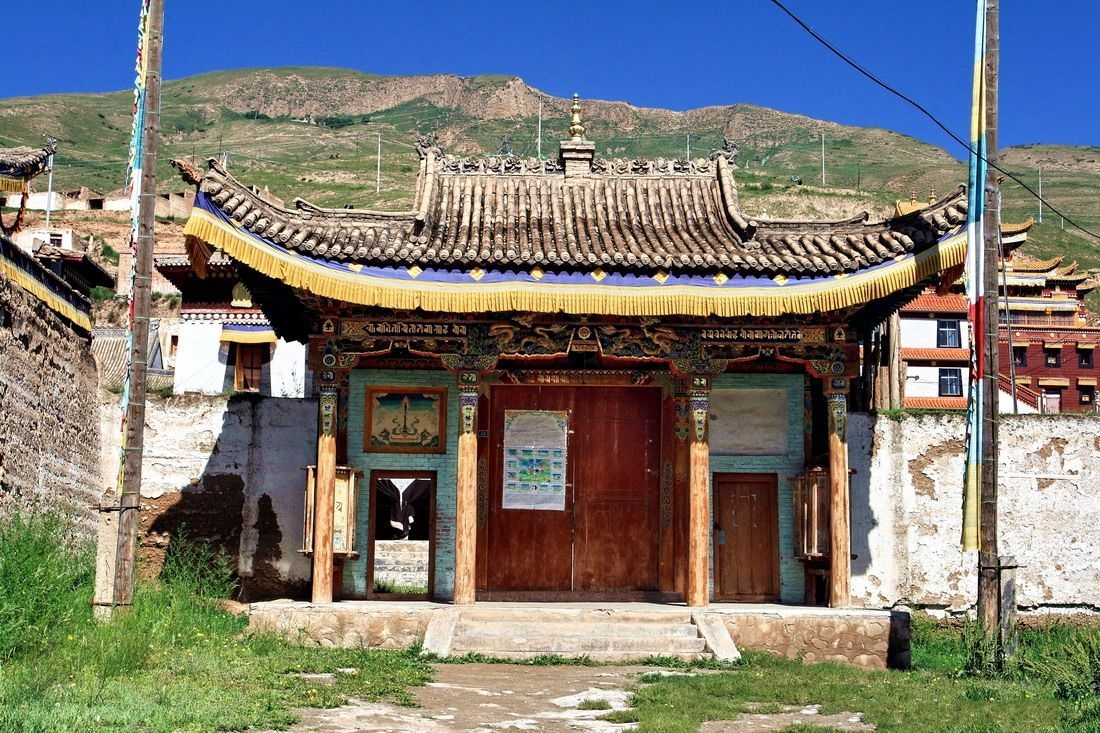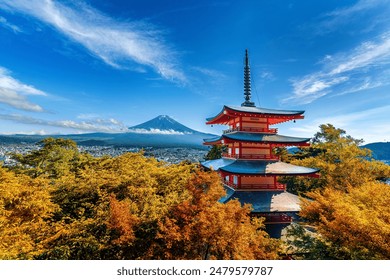Discover the Serenity of Longwu Temple: A Hidden Gem in [Location]
![Discover the Serenity of Longwu Temple: A Hidden Gem in [Location]](https://www.chinahistorytrip.com/wp-content/uploads/2025/09/longwu-temple-a-scenic-view-of-longwu-temple-8611.jpg)
An Essential Guide to Visiting Longwu_Temple
Nestled in the serene landscapes of Tongren County, Qinghai Province, Longwu Temple, also known as Rongwo Monastery, stands as a magnificent testament to Tibetan Buddhist culture and architecture. With its origins tracing back to the 13th century, this vibrant monastic complex is not only one of the largest in the region but also serves as a pivotal center for the Gelug school of Tibetan Buddhism. As you approach the temple, the striking golden statues and the rhythmic prayers of devoted monks envelop you, inviting you to explore the sacred grounds.
This revered site offers visitors a unique glimpse into the spiritual life of Tibetan Buddhism, where centuries-old traditions blend seamlessly with the striking natural beauty of the surrounding mountains. While navigating through the intricate alleyways and ornate halls, you’ll encounter the steadfast dedication of the monks, witness the captivating ritual practices, and admire the stunning thangka art that adorns the walls.
However, as with any destination, it’s essential to prepare for your visit. Understanding the local customs and the atmosphere within the monastery can enhance your experience and foster a respectful interaction with the resident monks and fellow visitors. Whether you are seeking spiritual insight, cultural enrichment, or simply an escape into a tranquil environment, Longwu Temple promises a rewarding experience that resonates beyond the confines of its ancient walls.
In This Guide
- An Essential Guide to Visiting Longwu_Temple
- The Rich History and Legends of Longwu_Temple
- Main Highlights: What You Absolutely Can’t Miss
- Planning Your Visit: A Practical Guide
- Tickets: Prices, Booking, and Tips
- How to Get There: A Complete Transportation Guide
- Local Cuisine and Accommodation Nearby
- Frequently Asked Questions
- Final Thoughts on Your Trip
The Rich History and Legends of Longwu_Temple
Nestled in the stunning hills of Tongren County within Qinghai Province, Longwu Temple, also known as Rongwo Monastery, boasts a rich tapestry of history and culture that dates back over 700 years. Established in 1301, this majestic site is a cornerstone of the Gelug School of Tibetan Buddhism, having played a crucial role in the spiritual and educational development of the region.
Longwu Temple is not just a place of worship; it is a vibrant center of learning, hosting one of the largest collections of Buddhist monks in Qinghai. The monastery has been a nurturing ground for many lamas and “geshes” (doctors of Tibetan Buddhism), who undergo rigorous training involving challenging examinations that test their knowledge and dedication. This commitment to spiritual education has helped preserve the unique traditions of Tibetan Buddhism through generations.
The architectural style of Longwu Temple reflects the traditional Tibetan aesthetic, characterized by intricate murals, golden statues, and ornate prayer wheels. Although the monastery has faced challenges, including damage during the Cultural Revolution, extensive restoration efforts have ensured that its historical and spiritual significance endures. Visitors can wander through its expansive courtyards and experience the profound atmosphere created by the monks in their flowing red robes, engaged in prayer and study.
Legends abound in and around Longwu Temple, enriching its allure. Among these tales, one speaks of the temple being a spiritual beacon, attracting pilgrims from far and wide. These devotees come not only to pay homage but also to partake in the sacred rituals that have been practiced here for centuries. The temple’s serene environment and the natural beauty of the surrounding landscape further enhance its reputation as a place of peace and reflection.
Moreover, Longwu Temple serves as a mother monastery to over 35 other monasteries in the region, cementing its status as a pivotal institution in Tibetan Buddhism. As a site that combines deep spirituality with stunning artistry, Longwu Temple invites travelers to explore its rich history, experience its vibrant culture, and uncover the legends that breathe life into this remarkable sanctuary. Whether you are a history enthusiast, a spiritual seeker, or simply someone who appreciates beauty, Longwu Temple promises an unforgettable journey into the heart of Tibetan heritage.

Longwu_Temple.
Main Highlights: What You Absolutely Can’t Miss
Longwu Temple, also known as Rongwo Monastery, is a captivating destination in Tongren County, Qinghai Province, that offers a unique glimpse into Tibetan Buddhism and culture. Here are the essential highlights that you absolutely can’t miss during your visit:
1. Majestic Architecture
As one of the largest and oldest monasteries in Qinghai, Longwu Temple boasts stunning architectural features typical of Tibetan design. The intricate carvings, vibrant murals, and ornate prayer halls create a visual feast that reflects centuries of devotion. Be sure to capture the iconic golden statue at the entrance, which provides a breathtaking backdrop for photographs.
2. Cultural Significance
Established in 1301, Longwu Temple is not only a religious site but also a historical treasure. It serves as a major center for the Gelug School of Tibetan Buddhism and has been a nurturing ground for many monks over the years. As you wander through its expansive grounds, take a moment to appreciate its role as a mother monastery to many others in the region.
3. Insightful Monastic Life
One of the most enriching experiences at Longwu Temple is witnessing the daily life of the monks. While visiting, you may encounter young monks engaged in their studies or participating in spiritual debates, particularly in the afternoons. This offers a rare insight into their rigorous educational system and the challenges they face on their path to becoming “Geshe” (doctors of Buddhist philosophy).
4. Stunning Surroundings
The temple is set against the backdrop of the beautiful Amdo region, where the stunning landscapes add to the spiritual ambiance. Enjoy a leisurely stroll around the temple grounds, surrounded by lush greenery and the serene atmosphere that envelops the area. The sight of monks in their flowing red robes adds to the picturesque scenery.
5. Thangka Art Shops
Just a stone’s throw away from the temple, you can explore local Thangka art shops. These shops are run by skilled artisans who are passionate about sharing their craft. Engaging with them provides a wonderful opportunity to learn about this intricate form of Buddhist painting and possibly purchase a unique souvenir.
6. Visitors’ Tips
While Longwu Temple is a must-visit, it’s essential to be prepared for some logistical challenges. Be aware that tickets must be obtained in advance by calling a designated number, which can be somewhat inconvenient for tourists. Patience and respect for the monastic community will enhance your experience, as the environment can be quite tranquil yet serious.
7. Respectful Engagement
Visitors are encouraged to approach the temple with a sense of respect and mindfulness. This is a sacred space for many, and while photography is permitted, always be considerate of the monks and their practices. Engaging respectfully will enrich your visit and foster a deeper connection with the spiritual environment.
In summary, Longwu Temple offers an immersive experience where stunning architecture, rich cultural heritage, and the serene atmosphere of monastic life converge. Make sure to allow plenty of time to explore this remarkable site, as each corner holds a story waiting to be discovered.

Longwu_Temple.
Planning Your Visit: A Practical Guide
When preparing for a visit to Longwu Temple, also known as Rongwo Monastery, there are several practical considerations to ensure a smooth and enjoyable experience. Nestled in Tongren County within the Huangnan Tibetan Autonomous Prefecture of Qinghai, this stunning Buddhist site offers a glimpse into Tibetan culture, spirituality, and art. Here’s what you need to know before you go.
Getting There
Location: Longwu Temple is located in Longwu Town, Tongren County, about 3 hours by car from Xining, the capital of Qinghai Province.
Transportation:
– By Car: Renting a car or hiring a driver is the most convenient way to reach the temple. The scenic drive through the countryside is worth the journey.
– Public Transport: Buses run regularly from Xining to Tongren County. Once in Tongren, local taxis or shared vehicles can take you to the temple.
Admission and Tickets
Ticket Purchase: Admission to Longwu Temple is typically charged at around 60 RMB. However, it is advised to check for any recent changes in pricing or access protocols. Note that tickets may need to be booked in advance by calling a designated number. This can be a bit tourist-unfriendly, so planning ahead is advisable to avoid any inconveniences.
Best Time to Visit
Opening Hours: Longwu Temple is open 24 hours a day, which means you can visit at your convenience. However, to fully immerse yourself in the atmosphere, try to arrive during daylight hours.
Seasonal Considerations: The best time to visit is during spring and autumn when the weather is mild and the crowds are manageable. Summers can be busy with tourists, while winters may be cold but offer a unique serenity.
What to Expect
Cultural Etiquette: As a functioning monastery, it’s essential to respect the customs and practices of the monks and local community. Always ask for permission before taking photos, especially of monks, and refrain from filming without consent to maintain a respectful atmosphere.
Exploring the Temple: The vast complex of Longwu Temple features intricate architecture, beautiful statues, and stunning views. Take your time to wander through the halls, appreciate the art, and observe the monks as they go about their daily routines.
Nearby Attractions
After exploring Longwu Temple, consider visiting the nearby Thangka shops where local artists showcase their skills and passion for this traditional art form. Engaging with the artists can provide a deeper understanding of Tibetan culture.
Tips for a Smooth Visit
- Dress Appropriately: As a place of worship, modest attire is recommended. Ensure your shoulders and knees are covered to show respect.
- Language: While English is not widely spoken, learning a few basic Mandarin phrases can be helpful. Having a translation app handy can also facilitate communication.
- Cash is King: Make sure to carry cash, as many places might not accept credit cards. Local ATMs may be limited, so plan accordingly.
Conclusion
Visiting Longwu Temple offers a remarkable opportunity to engage with Tibetan Buddhism and immerse yourself in the culture of this unique region. With proper planning and an open heart, your experience at this sacred site will undoubtedly be memorable.

Longwu_Temple.
Tickets: Prices, Booking, and Tips
When planning a visit to Longwu Temple, also known as Rongwo Monastery, it’s essential to be well-informed about ticketing, pricing, and some handy tips to enhance your experience.
Ticket Information and Pricing
To enter Longwu Temple, visitors must purchase a ticket. The entry fee is approximately 60 RMB (about $9 USD). It’s important to note that the ticketing process may not be as straightforward as one might hope; reports indicate that you typically need to call a designated phone number to arrange for your ticket purchase. This can be a bit inconvenient, especially for international travelers who might not have local calling capabilities.
Booking Tips
– Plan Ahead: Given the ticketing requirements, it’s wise to secure your visit in advance. If you’re unfamiliar with making reservations in China, consider seeking assistance from your hotel or a local guide who can help facilitate the process.
– Timing is Key: The temple is open 24 hours a day, but visiting during the late afternoon can be particularly rewarding. Around 4 PM, you may witness the monks engaging in their traditional debating sessions, offering a unique insight into their spiritual practices.
– Cultural Sensitivity: While exploring the temple, be respectful of the local customs and the monks’ activities. Some visitors have reported encounters with monks who seemed less than friendly. It’s advisable to maintain a respectful distance and refrain from filming without permission.
Best Practices for Your Visit
– Enjoy the Surroundings: Even if you face challenges regarding ticketing or monk interactions, the beauty of Longwu Temple is undeniable. Take your time to wander through the stunning architecture and picturesque views, especially the large statue that greets visitors at the entrance.
– Explore Nearby Attractions: If you find the atmosphere at the temple less welcoming, consider visiting nearby Thangka shops where local artists share their knowledge and passion for this beautiful art form. This can provide a more enjoyable and enriching experience.
By being prepared and respectful, you can make the most of your visit to Longwu Temple, taking in its breathtaking beauty and rich cultural heritage.
How to Get There: A Complete Transportation Guide
Reaching Longwu Temple, also known as Rongwo Monastery, can be an enriching adventure as you navigate the stunning landscapes of Qinghai Province in China. Here’s a detailed guide to help you get there seamlessly.
Getting to Longwu Temple
By Air
The nearest major airport is Xining Caojiabao Airport (XNN), located approximately 90 kilometers (56 miles) from Longwu Temple. Several domestic airlines operate flights to Xining from major cities such as Beijing, Chengdu, and Shanghai.
- From Xining Airport:
- Taxi: The most convenient option is to take a taxi directly to Longwu Temple. The journey will take about 2-3 hours depending on traffic and will cost around 300-400 RMB.
- Car Rental: If you prefer to drive, car rental services are available at the airport. Ensure you have an international driving permit and are comfortable navigating local roads.
By Train
Xining is well-connected by rail, with trains arriving from various parts of China.
- From Xining Railway Station:
- Train to Tongren: Board a train heading to Tongren (also known as Rebkong). The trip takes approximately 2-3 hours.
- Local Transport: Upon arrival at Tongren Railway Station, you can take a taxi or a local bus to Longwu Temple, which is about 5 kilometers (3 miles) away.
By Bus
For travelers seeking a more budget-friendly option, buses from Xining to Tongren are frequent.
- From Xining Bus Station:
- Direct Bus: Take a direct bus to Tongren. The journey usually lasts around 3-4 hours and costs about 50-100 RMB.
- Local Transport: Once in Tongren, you can hire a taxi or walk to the temple, as it is relatively close to the bus station.
Local Transportation in Tongren
Tongren is a small town, making local transportation quite manageable.
- Taxis: Taxis are readily available and relatively inexpensive. Make sure to agree on a fare or use the meter.
- Walking: If you’re staying in the town center, Longwu Temple is within walking distance. The scenic route offers a chance to soak in the local culture and ambiance.
Tips for Visiting Longwu Temple
- Ticket Purchase: Note that tickets may need to be purchased in advance by calling the temple, as there may not be a dedicated ticket office on site.
- Respect Local Customs: As a working monastery, be respectful of the monks and their practices. Photography may be restricted in certain areas, so be sure to ask before taking pictures.
- Timing Your Visit: The temple is open 24 hours, but visiting during daylight hours will allow you to fully appreciate the intricate architecture and surrounding scenery.
Conclusion
Getting to Longwu Temple is an adventure in itself, with options that cater to different preferences and budgets. Whether you choose to fly, take a train, or hop on a bus, the journey will lead you to one of the most significant religious sites in Qinghai Province. Enjoy your visit to this majestic temple and the rich culture that surrounds it!

Longwu_Temple.
Local Cuisine and Accommodation Nearby
Nestled in the serene surroundings of Tongren County, Longwu Temple offers not only a glimpse into Tibetan Buddhism but also an opportunity to indulge in the local culinary delights and find comfortable accommodations. Here’s a guide to help you explore the flavors and stays nearby.
Culinary Delights
RouBaoZi Guan
Just a short walk from Longwu Temple, RouBaoZi Guan is a cozy spot renowned for its delicious steamed buns (baozi) filled with various meats and vegetables. The ambiance is warm and inviting, perfect for a quick meal after your temple visit. Travelers rave about the freshness of the ingredients and the authenticity of the flavors, making it a must-try for anyone looking to experience local cuisine.
Thangka Artisans’ Cafés
While exploring the nearby Thangka shops, take a moment to enjoy the small cafés that often accompany these art studios. Many of them serve traditional Tibetan tea and snacks. The unique setting, surrounded by vibrant Thangka paintings, allows you to sip on butter tea while chatting with local artists about their craft. It’s a delightful way to immerse yourself in both art and flavors.
Accommodations
Tongren Hotel
Located conveniently near Longwu Temple, Tongren Hotel offers a comfortable stay for international travelers. With modern amenities and a touch of local decor, this hotel provides a relaxing atmosphere. Guests appreciate the clean rooms and courteous staff, who are always willing to assist with travel inquiries. The hotel’s location makes it easy to explore the temple and surrounding attractions.
Tibetan-style Guesthouses
For a more authentic experience, consider staying in one of the Tibetan-style guesthouses available in the area. These accommodations often feature traditional decor and a homely atmosphere, allowing you to engage with local culture. Many guesthouses provide meals, giving you a chance to enjoy home-cooked Tibetan dishes made from locally sourced ingredients.
Final Thoughts
Exploring Longwu Temple isn’t just about the sights; it’s an opportunity to savor the local flavors and enjoy comfortable lodging. Whether you opt for a quick bite at RouBaoZi Guan or a more immersive experience in a guesthouse, your journey through Tongren County will surely be enriched by its culinary and hospitality offerings. Enjoy your visit!

Longwu_Temple.
Frequently Asked Questions
Frequently Asked Questions about Longwu Temple (隆务寺)
-
What is the best time to visit Longwu Temple?
The temple is open year-round, but visiting during the warmer months (May to October) is advisable for pleasant weather. Early mornings or late afternoons typically offer a quieter experience, allowing for a more peaceful exploration of the temple grounds. -
Is there an entrance fee for Longwu Temple?
Yes, there is an entrance fee of approximately 60 RMB for tourists. This fee helps maintain the temple and its facilities. Be sure to have cash on hand, as card payments may not be accepted. -
How do I get tickets to enter the temple?
Tickets can be purchased on-site, but some visitors have reported needing to call a phone number to secure a ticket in advance. It’s best to check for updated procedures before your visit to avoid any inconveniences. -
Are there guided tours available?
While there are no official guided tours, many visitors enjoy exploring the temple on their own. Local guides may be available for hire, and you can often find helpful information from fellow travelers or nearby Thangka artists who are passionate about the area’s culture. -
What should I wear when visiting Longwu Temple?
Dress modestly and respectfully, as this is an active place of worship. Comfortable shoes are recommended for walking around the temple complex, and it’s wise to consider layers due to the variable mountain climate. -
Can I take photographs inside the temple?
Photography is generally allowed, but be mindful of the monks and other visitors. Always ask for permission before taking pictures of individuals, especially monks, to show respect for their privacy and spiritual practices. -
Are there facilities like restrooms or food available?
Basic restroom facilities may be available on-site, but options for food and drink are limited within the temple complex itself. It’s a good idea to bring water and snacks, or plan to visit local eateries in Tongren after your exploration. -
What else is there to do nearby?
After visiting Longwu Temple, consider exploring the nearby Thangka shops where local artists showcase their work. The Regong Art Country is also nearby, offering a glimpse into the rich artistic traditions of the region. Enjoying the scenic beauty of the surrounding landscape is highly recommended as well!
Final Thoughts on Your Trip
As you reflect on your journey to Longwu Temple, allow the echoes of the past and the vibrant spirituality of the present to resonate within you. This remarkable site, steeped in over 700 years of history, serves not only as a place of worship but as a testament to the enduring spirit of Tibetan Buddhism. While experiences may vary, the beauty of the temple complex, with its stunning architecture and serene surroundings, is undeniable.
Even amidst challenges, such as navigating ticketing or differing cultural interactions, the allure of Longwu Temple remains compelling. Take the time to explore the intricate details of the monastery, engage with the local artisans in nearby Thangka shops, or simply breathe in the tranquil atmosphere that permeates this sacred space.
Whether you find a moment of peace in the shadow of its ancient walls or are captivated by the dedication of the monks, your visit to Longwu Temple will surely be a memorable chapter in your travel narrative. Embrace the lessons learned and the beauty witnessed, and carry these experiences with you as you continue your adventures in the breathtaking landscapes of Qinghai.